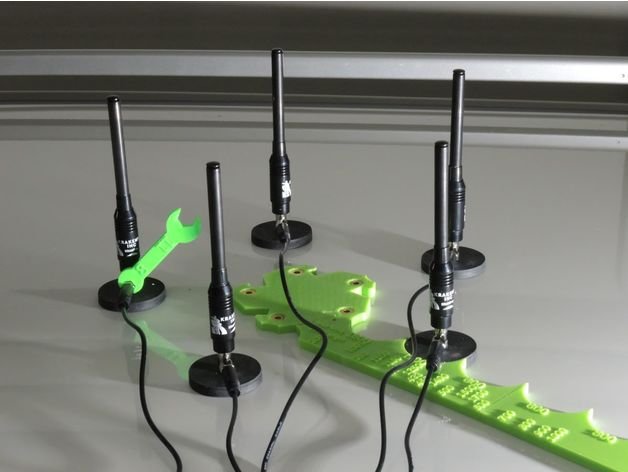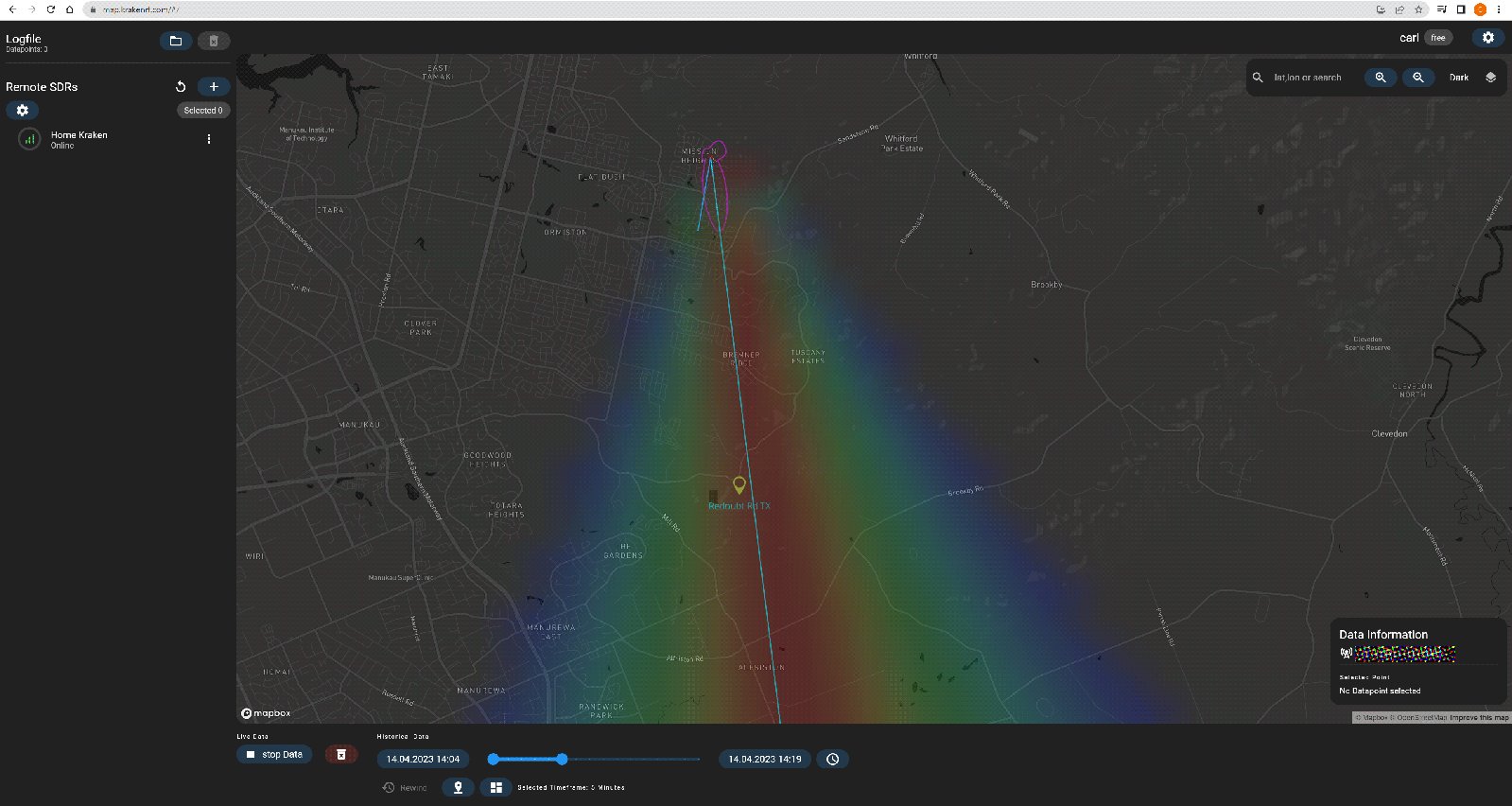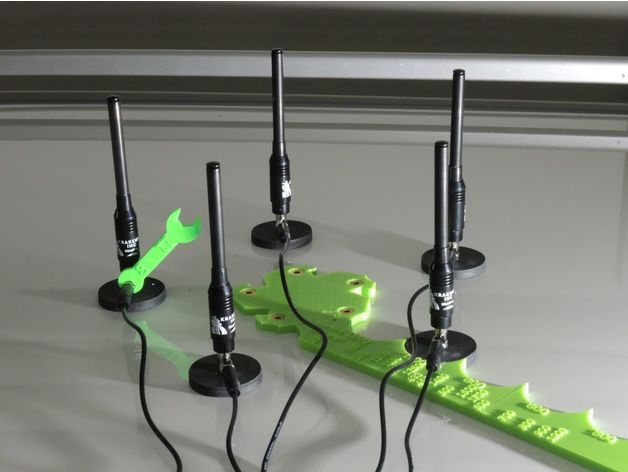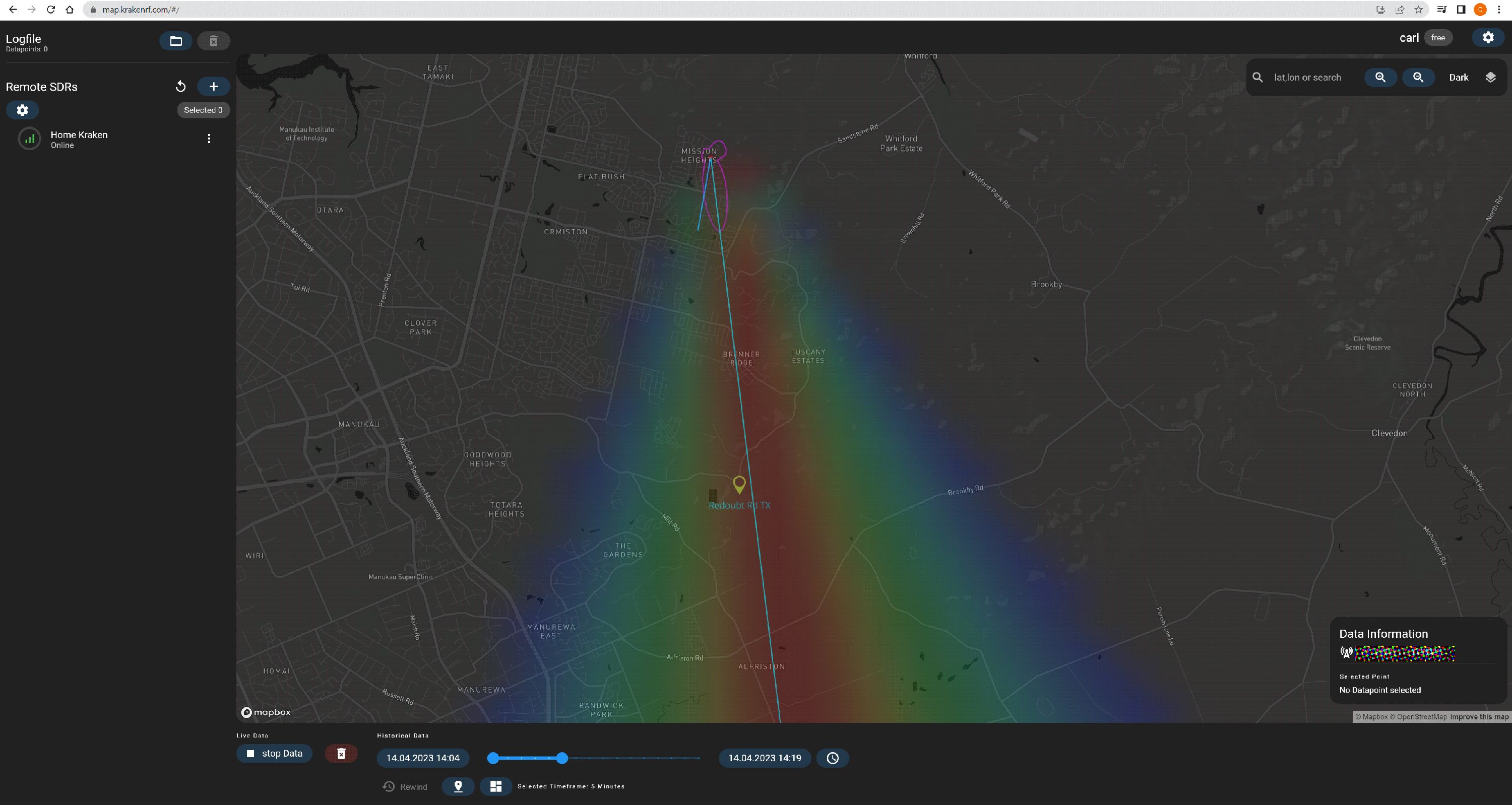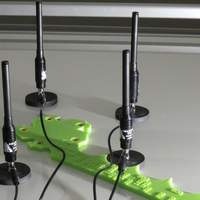Project update 20 of 23
Manufacturing and Stock Updates
by KrakenRF IncManufacturing of our latest large batch is now complete, and the Crowd Supply and Mouser stores are both stocked and ready to ship out. Thanks to everyone who was waiting for your patience while we finished manufacturing this batch.
Secondary Products
We currently have some Raspberry Pi 4B 2G in stock and available for US$60 + shipping, but only for existing customers of KrakenSDR. If you are interested, please contact us via the "contact us" form at www.krakenrf.com.
Field Reports
Thank you to all our customers who have been publishing their KrakenSDR experiences online! Here are a few we’d like to highlight:
Adrian’s 3D Printed Antenna Array Spacer
KrakenSDR user Adrian has submitted a great simple to use 3D printable array spacing file on Thingiverse. Adrian’s idea is to use magnets to hold a single center core piece on the roof of a car, and then have a single arm that can be used to precisely space the antennas.
https://www.thingiverse.com/thing:5787042
Adrian’s KrakenSDR GNU Radio Windows Guide
Adrian has also created a very handy guide that shows how he was able to get our KrakenSDR GNU Radio flowgraph working on Windows.
In this setup the core KrakenSDR software is running on a Linux machine as usual, however the GNU Radio flowgraph is running on Windows, and gathering data from the KrakenSDR Linux server over an Ethernet connection.
How to install and run gr-krakensdr natively on Windows: https://www.redgo.ch/krakensdr/gr-krakensdr_natively_on_Windows.pdf
YouTube
A number of user YouTube videos demonstrating or talking about the KrakenSDR have been uploaded in the past few months of this year.
In this video, FirstToken gives a simple demonstration of the KrakenSDR showing bearings to various signals
In this video, Aaron, the creator of DragonOS shows multiple KrakenSDR stations in operation with DF-Aggregator.
Finally in this video VK7NFI gives a talk to a ham radio club about KrakenSDR:
Core Code Updates
We wanted to thank Mykola and other third party contributors who have been submitting pull requests to our core codebase. One of the latest submissions adds the ability to transform a circular array into a "virtual linear array". This gives the ability to use smoothing and multipath decorrelation techniques that normally only will work with linear array geometry. However, we note that these settings are quite experimental and we’re yet to see concrete improvements. It is possible that the use of these techniques can introduce a bearing skew/offset into the results which could make results worse. So for standard use cases, please stick with the standard MUSIC algorithm with decorrelation algorithms turned off. However if you are willing to test you can turn them on.
We’ve also updated the SD card to V1.5 now, which includes code with these additions as well as some general tidy up that saves disk space.
There also still are a number of pending PR’s on the GitHub that we will be looking to integrate soon. Thanks again to anyone contributing to the code!
Finally, we also wanted to note that the code has been successfully tested on the Orange Pi 5, and we’ve found that system to be a good and very fast alternative to the Pi 4. However, the current versions of the Orange Pi 5 do not come with built in WiFi, making mobile use a bit difficult. Now that the Orange Pi 5B with built in WiFi was recently released we hope to make that our second recommended computing platform and include a ready to use image file for it shortly after we receive ours.
KrakenSDR Web and Android Mapper
Our web mapper at map.krakenrf.com has also been improving these past few months. In recent updates we’ve improved the UI and added the ability to view the heatmap history for a few days back in time.
Within the next few months we are planning to add a ‘groups’ feature, which will allows organizations like ham radio clubs to have KrakenSDR users join a group where they can share their bearing data on the same group map. This will allow groups to work together triangulate the source of unknown signals rapidly.
We’re also in the process of upgrading the Android App so that it will be compatible with Google’s latest API requirements deadline which is coming up. Nothing should change functionally however this will hopefully add further speed and stability to the app.
Finally, we’ve discovered a few algorithmic improvements to the heat mapping grid algorithm which we hope to implement into the app and web mapper shortly. This should allow for the heat maps to be computed significantly faster, even on slower devices, and should enable a feature that allows users to view an animation of the heat map changing over time on the web mapper.
